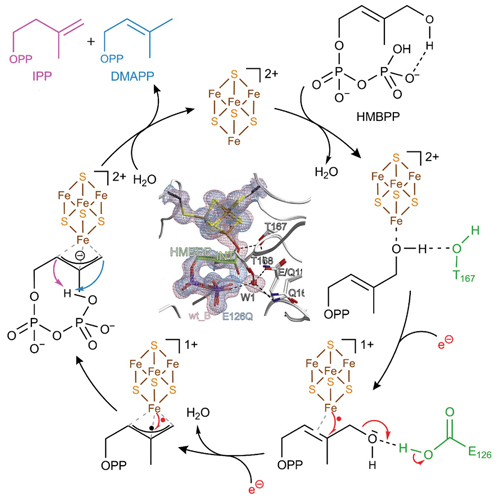Crystal Structures of Mutant IspH Proteins Reveal a Rotation of the Substrate's Hydroxymethyl Group during Catalysis
06-Feb-2012
Journal of Molecular Biology, 2012, doi:10.1016/j.jmb.2011.11.033, Volume 416, pages 1–9, published on 06.02.2012
Journal of Molecular Biology, online article
Journal of Molecular Biology, online article
Isoprenoids derive from two universal precursors, isopentenyl diphosphate and dimethylallyl diphosphate, which in most human pathogens are synthesized in the deoxyxylulose phosphate pathway. The last step of this pathway is the conversion of (E)-1-hydroxy-methylbut-2-enyl-4-diphosphate into a mixture of isopentenyl diphosphate and dimethylallyl diphosphate catalyzed by the iron–sulfur protein IspH. The crystal structures reported here of the IspHmutant proteins T167C, E126Dand E126Qreveal an alternative substrate conformation compared to the wild-type structure. Thus, the previously observed alkoxide complex decomposes, and the substrate's hydroxymethyl group rotates to interact with Glu126. The carboxyl group of Glu126 then donates a proton to the hydroxyl group to enable water elimination. The structural and functional studies provide further knowledge of the IspH reaction mechanism, which opens up new routes to inhibitor design against malaria and tuberculosis.











